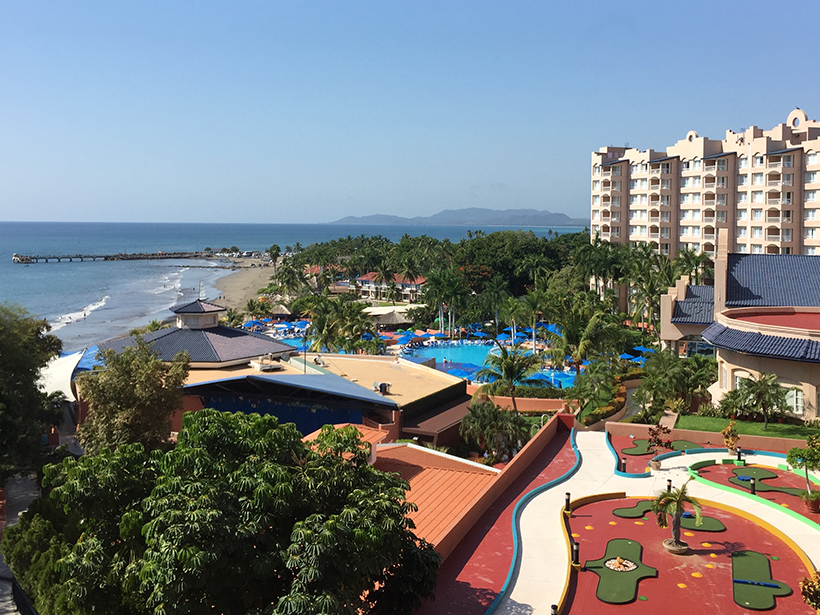The existence of repeated episodes of slow slip (popularly referred to as slow earthquakes) has challenged the classic view of the seismic cycle in subduction zones and mechanical models of fault evolution. Slow slip is widely observed in subduction zones and continental plate boundaries.
A Chapman Conference on Slow Slip Phenomena, held in February in Ixtapa, Mexico, brought together more than 110 researchers to discuss fault structure and conditions that lead to slow slip. Speakers contrasted slow slip and associated phenomena with the behaviors of regular earthquakes (Figure 1). The talks focused on geodetically observed slow slip events (SSEs), as well as seismically observed phenomena, such as tremor, low-frequency earthquakes (LFE), and very low frequency earthquakes.

An open issue is whether all of these phenomena represent a single class of physical process with a common scaling law. The relationships between slow slip phenomena and regular earthquakes show great spatiotemporal complexity and variability among the different regions.

Conference discussions also centered on variations in slow slip, tremor, and LFE behavior with downdip location in seismic zones (Figure 2). New catalogs of tremors and LFEs shed new light on the mechanics of creep and slow slip on subduction interfaces. Conceptual models of stress and strength evolution during the seismic cycle have been confirmed by the sensitivity of the tremors to the tides. Numerous observations of triggered tremors in various contexts attest to the high sensitivity of slow slip and tremor to stress perturbations.
Participants also focused on the geological and structural environment of slow slip, including the geometrical relationship between the downdip location of deep tremors in seismic zones and the corner of the mantle wedge. The “serpentinized forearc mantle” in Figure 2 represents this corner of the mantle wedge, which is the larger triangular section of mantle between the subducting tectonic plate and the overriding plate. The interplay between inferred high fluid pressure, permeability, fault strength, and the potential deposition of minerals, including gold, was highlighted at the conference.
The relation between slow slip events and large regular earthquakes is a key question for hazard assessment.
The relation between SSEs and large regular earthquakes is a key question for hazard assessment. Eventually, inclusion of SSEs may be required in time-dependent probabilistic hazard models. Observations of interactions between large earthquakes and SSEs raise questions on their relation to widely observed postseismic deformation, which could be a clue to the existence of large-scale slow deformation prior to large subduction earthquakes. The new observations open paths to revisit the concepts of fault coupling and seismic gaps.
The currently available collection of kinematic models of slip during large SSEs from geodetic data inversion indicates the variability of source processes, not only between different locations but also between repeating SSEs. The models suggest that repeated SSEs, like regular earthquakes, redistribute the stress on the plate interface. Laboratory experiments using conditions analogous to those in the Earth have produced slow slip.
The final topic at the conference featured new approaches to data gathering and analysis, focusing on shallow offshore portions of seismic zones and the deeper regions that host episodic slow slip. Breakout sessions focused on future directions and approaches to advance the science, including the need for a community repository for tremor catalogs and slow slip inversion results.
References
Audet, P., and Y. Kim (2016), Teleseismic constraints on the geological environment of deep episodic slow earthquakes in subduction zone forearcs: A review, Tectonophysics, 670, 1–15, doi:10.1016/j.tecto.2016.01.005.
Cavalié, O., E. Pathier, M. Radiguet, M. Vergnolle, N. Cotte, A. Walpersdorf, V. Kostoglodov, and F. Cotton (2013), Slow slip event in the Mexican subduction zone: Evidence of shallower slip in the Guerrero seismic gap for the 2006 event revealed by the joint inversion of InSAR and GPS data, Earth Planet. Sci. Lett., 367, 52–60.
—Allen LeRoy Husker, Instituto de Geofísica, Ciudad Universitaria, Del. Coyoacán, Mexico; email: [email protected]; Heidi Houston, Department of Earth and Space Sciences, University of Washington, Seattle; Michel Campillo, Laboratoire de Geophysique Interne et Tectonophysique, Université Joseph Fourier, Grenoble, France
Citation:
Husker, A. L.,Houston, H., and Campillo, M. (2016), Understanding slow slip and tremor on plate boundaries, Eos, 97, https://doi.org/10.1029/2016EO054291. Published on 27 June 2016.
Text © 2016. The authors. CC BY-NC-ND 3.0
Except where otherwise noted, images are subject to copyright. Any reuse without express permission from the copyright owner is prohibited.

